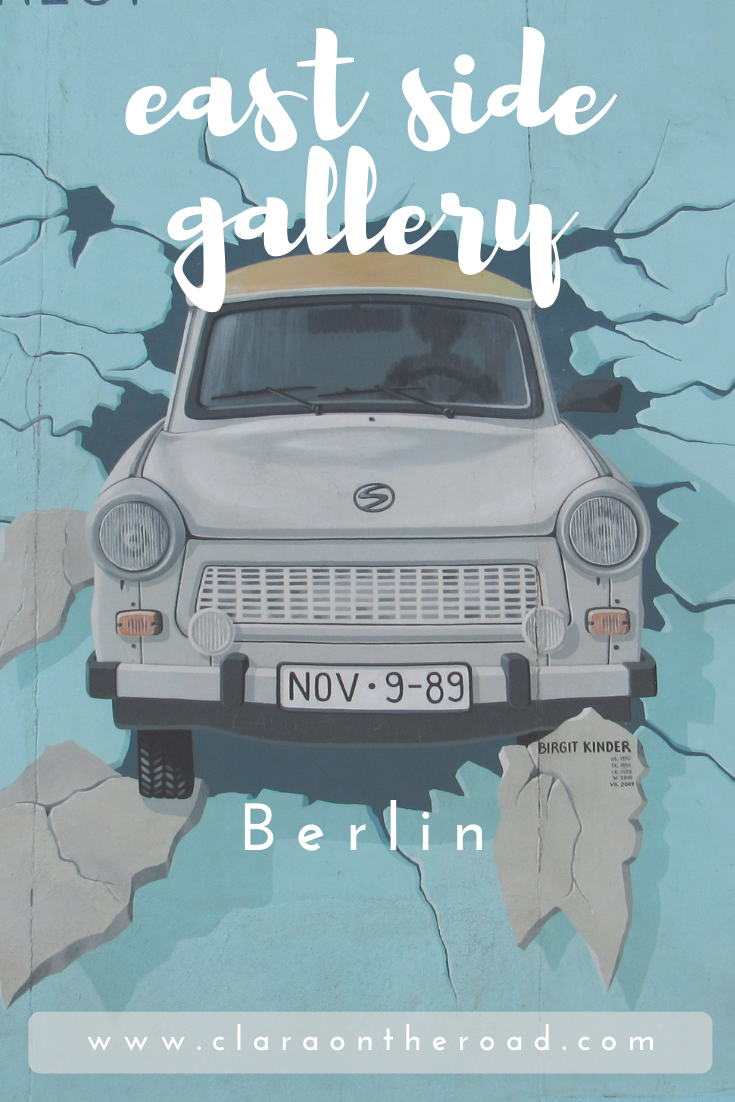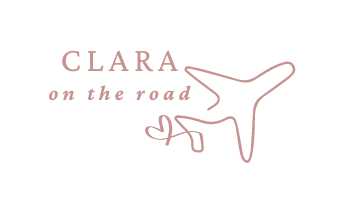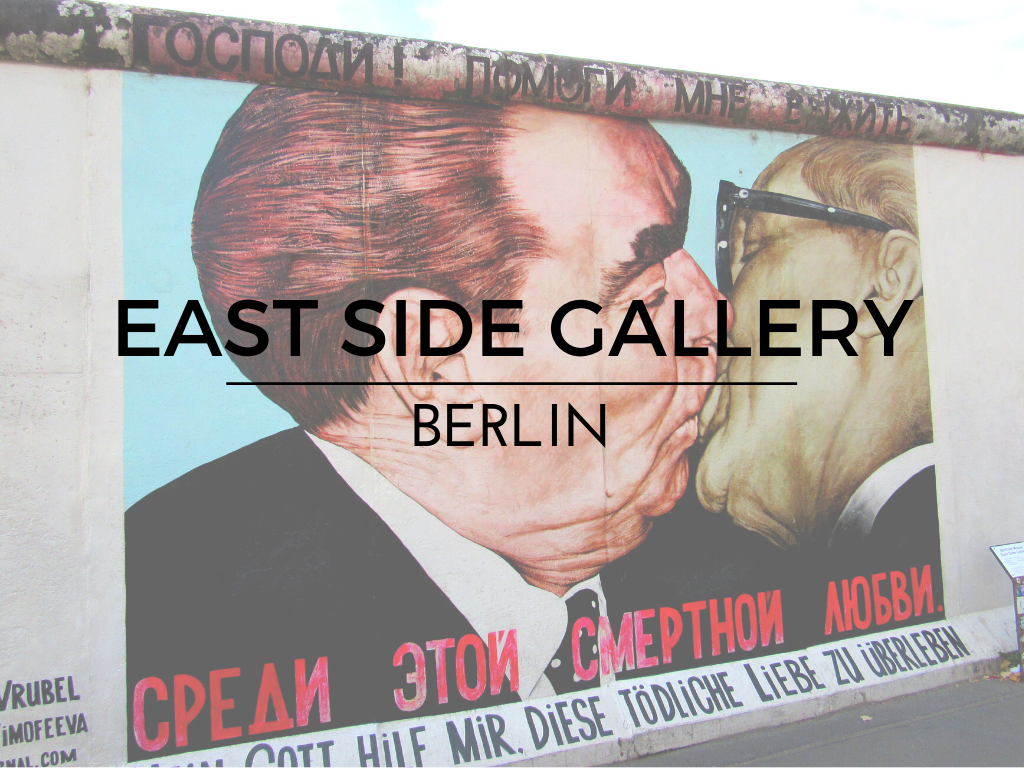The East Side Gallery in Berlin, in addition to being one of the main tourist attractions of the city, represents an important piece of history as well as a huge artistic, meaningful space.
Although I recommend you to choose one of the many dedicated tours (there are many, and they are useful to really understand what you are visiting), it’s still useful to get there prepared.
Let’s see together everything you need to know before visiting the East Side Gallery in Berlin.
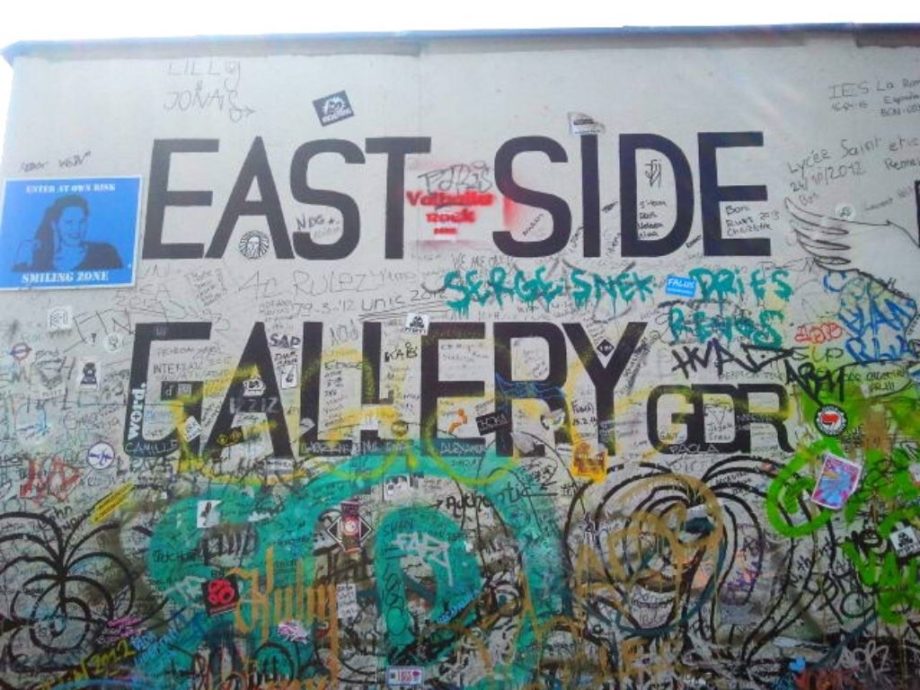
What is the East Side Gallery
The East Side Gallery is a part of the Berlin Wall, about 1.3 km long, decorated with hundreds of original murals (about 106), the result of different artistic expressions, which make it the largest open-air art gallery of the world.
This stretch of wall divided East Germany from West Germany in the Friedrichshain area. During the division years, the west-facing wall had been painted with graffiti and creative expressions from artists of the time and Berliners from the area, while the east side was gray and always guarded by patrols.
A significant difference, made even more evident by the fall of the wall. The municipality, to celebrate the new life of the city, commissioned 121 artists from different parts of the world to create murals on that stretch of the wall which remained intact.
In 1992 the East Side Gallery was declared a National Monument, and today leads the list of most visited attractions in Berlin, second only to the Brandenburg Gate.
The most famous works of the East Side Gallery
Many of the East Side Gallery’s murals are famous around the world, both for their execution and their significance. Some, more famous than others, have become real icons, reproduced on postcards, mugs, posters and merchandising of all kinds.
Let’s discover which are the most famous.
The mortal kiss
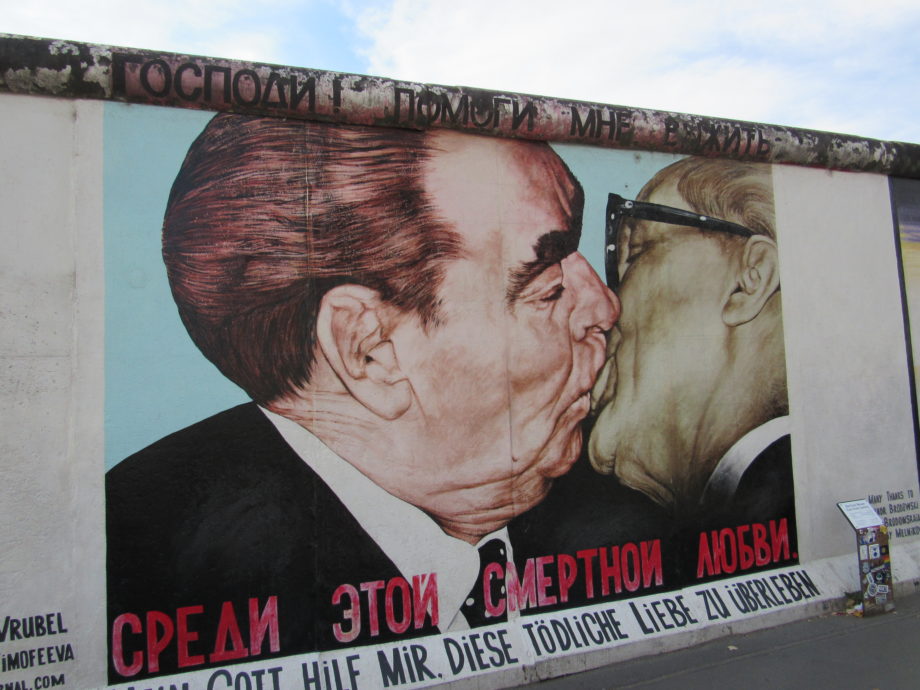
The Mortal Kiss (whose original name is My God, help me survive this mortal love), by Dimitrji Vrubel, depicts a kiss on the mouth between Erich Honecker, General Secretary of the USSR, and Leonid Breznev, President of the GDR: in 1979, during an official ceremony, they greeted each other by kissing on the mouth.
Test the Rest
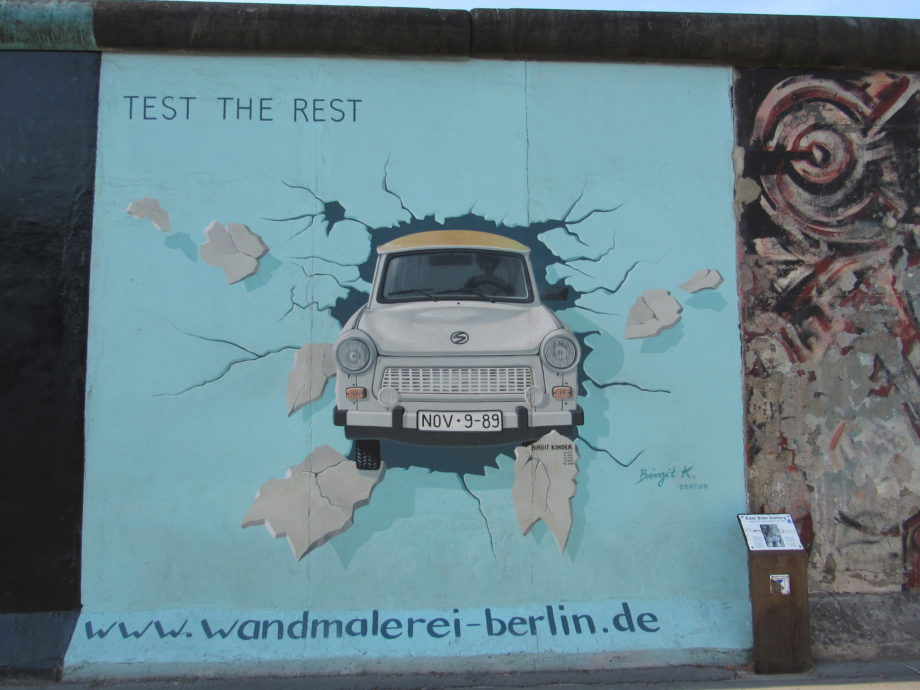
Test the Rest, by Birgit Kinder, represents a car breaking through a wall, and it has a profound symbolism: the car is a Trabant, a symbolic car of former East Germany and produced in the USSR during the Cold War years, and the wall is the Berlin Wall itself. The title of the work takes up a well-known advertising slogan for a brand of cigarettes “Test the West”.
The Wall Jumper
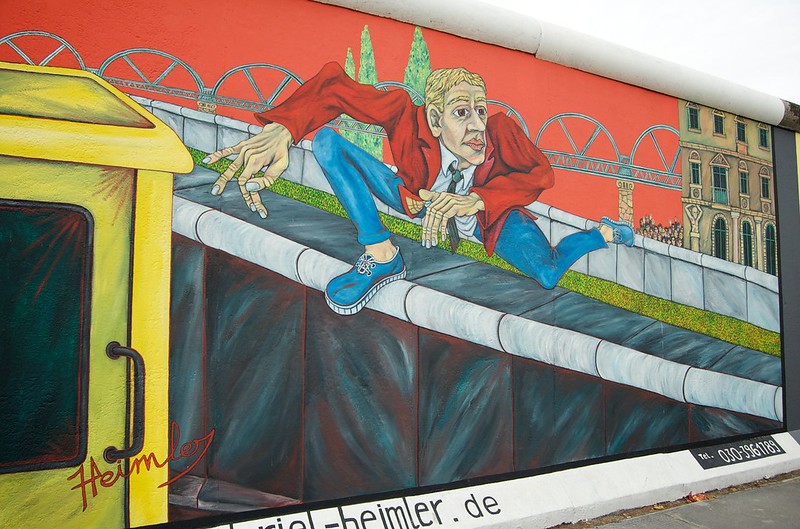
foto di Mark Turner
The Wall Jumper (Der Mauerspringer), by Gebriel Heimler, is a tribute to the hundreds of people who every day tried to escape from East Germany to the West. The successful attempts were very few, the consequences dramatic. Among the lucky ones we still remember Conrad Schumann, a guard of the east side of the wall who decided to desert in the summer of 1961.
Ohne Titel
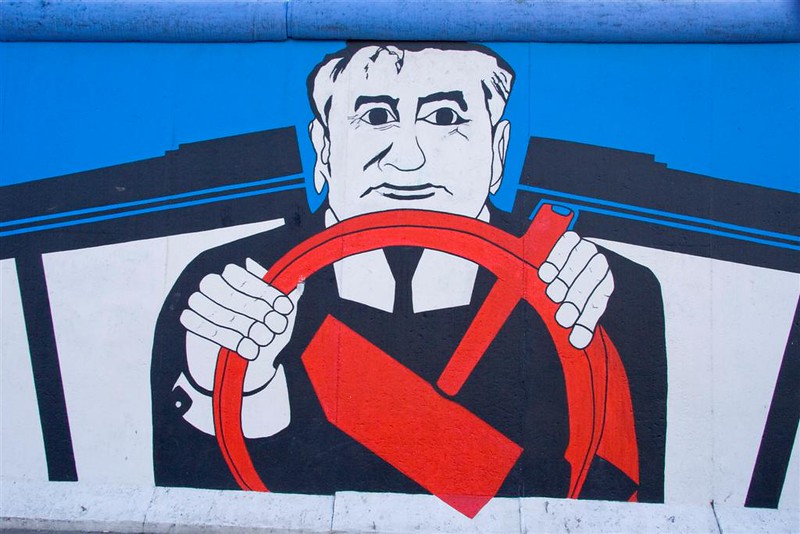
photo credit Mimmo Cardone
Ohne Titel (untitled), by Georg Lutz, represents the last general secretary of the Soviet Communist Party, Mikhail Gorbachev, driving a car. Metaphorically he’s guiding the USSR towards its dissolution (the symbolism is expressed in the red steering wheel in the shape of a hammer and sickle).
Frieden
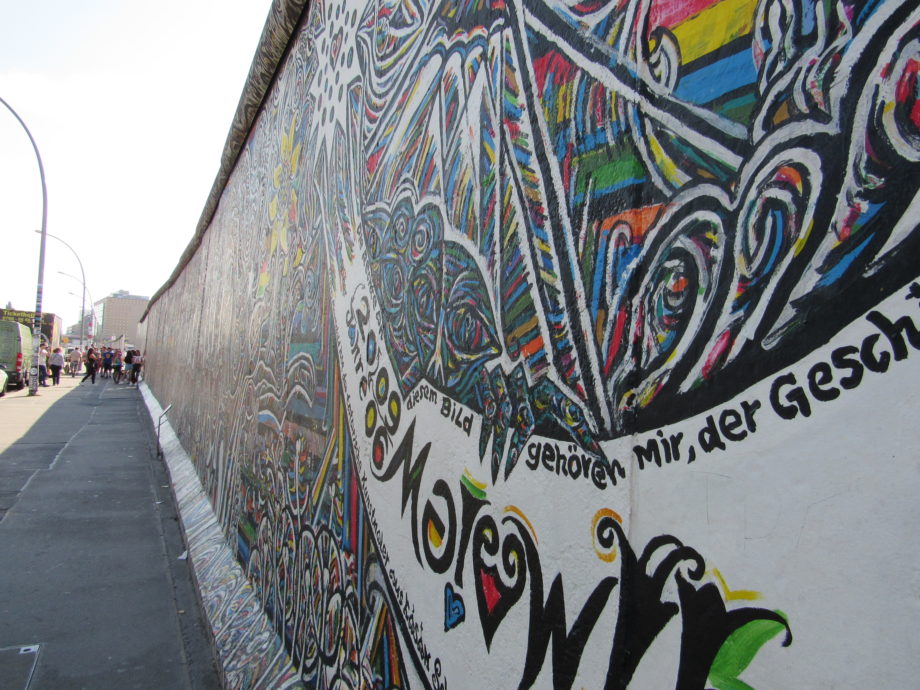
Worlds People, wir sind ein Volk, by Schamil Gimajev, which literally means “People of the whole world, we are one people”, recalls an ideal of brotherhood, and is better known as Frieden, Peace.
Thierry Noir’s heads
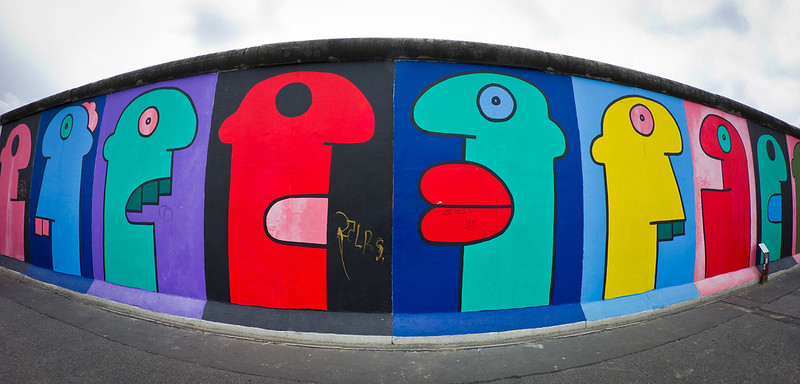
photo credit Marco Aversa
Hommage an die junge Generation, by Thierry Noir, are the famous stylized heads that the artist began to spread since the 1960s on the west side of the Wall. The style is very simple because the author used to paint them at night and in secret.
The notable works of the East Side Gallery certainly don’t end here. There are more than a hundred, and to fully appreciate them it is worth seeing them in person.
How to get to the East Side Gallery
The East Side Gallery is located in Berlin’s Friedrichshain district, along Mühlenstraße, and runs parallel to the River Spree. You can reach it with the U1 and U1 underground lines, getting off at Warschauer Straße stop, or by bus 347 or 248.
Since 2018 the East Side Gallery has been owned by the Berlin Wall Foundation (SBM) which is responsible for the conservation of the monument and which protect it from vandalism, unfortunately frequent.
